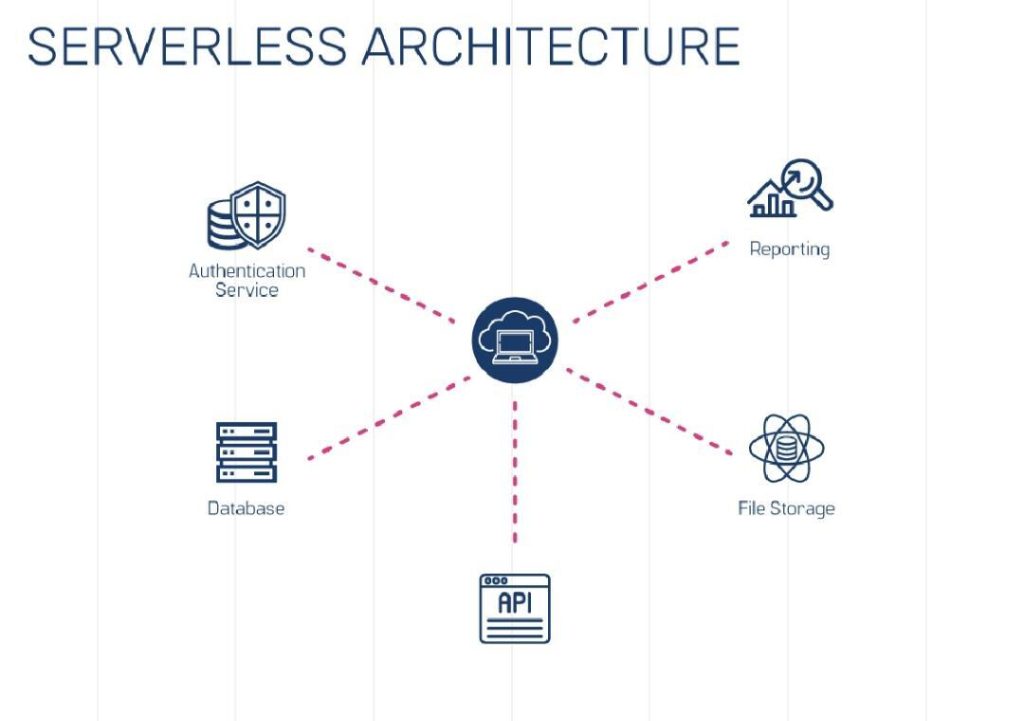
Why Serverless Architectures are Changing App Development
In recent years, the way we approach app development has undergone a significant transformation. One of the key drivers of this change is the adoption of serverless architectures. In this model, instead of provisioning and managing servers, developers can focus on writing code and let the cloud provider handle the infrastructure. This shift has numerous benefits, including reduced costs, improved scalability, and enhanced performance. In this blog post, we’ll explore the reasons why serverless architectures are revolutionizing app development.
What is a Serverless Architecture?
A serverless architecture is a cloud model where you run apps without worrying about the servers. The cloud provider takes care of all the infrastructure, so you can just focus on your code. This approach eliminates the need to provision, manage, and scale servers, which can be time-consuming and costly. With serverless architecture, you only pay for the resources you use, making it an attractive option for startups and businesses with limited budgets.
Benefits of Serverless Architectures
So, why are serverless architectures changing app development? Here are some of the key benefits:
1. Reduced Costs
One of the significant advantages of serverless architectures is the reduction in costs. Since you only pay for the resources you use, you can save a substantial amount of money. This is particularly beneficial for startups or businesses with limited budgets. With serverless architecture, you can scale your application without worrying about the costs of provisioning and managing servers.
2. Improved Scalability
Serverless architectures offer improved scalability compared to traditional server-based models. Since the cloud provider handles the infrastructure, you can easily scale your application up or down as needed. This means you can handle sudden spikes in traffic or changes in demand without having to worry about the infrastructure. With serverless architecture, your application can scale to meet the needs of your users without any downtime or performance issues.
3. Enhanced Security
Serverless architectures provide enhanced security compared to traditional server-based models. Since the cloud provider handles the infrastructure, you don’t have to worry about the security of your servers. The cloud provider is responsible for ensuring the security of the infrastructure, which means you can focus on writing code and developing your application.
4. Faster Deployment
Serverless architectures enable faster deployment and development of applications. Since you don’t have to worry about provisioning and managing servers, you can focus on writing code and developing your application. This means you can deploy your application faster and get it to market sooner, which is essential for businesses that need to stay competitive in today’s fast-paced market.
5. Improved Performance
Serverless architectures can improve the performance of your application. Since you only pay for the resources you use, you can optimize your application for performance. This means you can reduce the latency and improve the overall user experience. With serverless architecture, your application can respond quickly to user requests and provide a seamless user experience.
6. Greater Flexibility
Serverless architectures provide greater flexibility compared to traditional server-based models. Since you don’t have to worry about the infrastructure, you can focus on developing your application and scaling it as needed. This means you can adapt quickly to changes in demand and market trends, which is essential for businesses that need to stay competitive.
Challenges of Serverless Architectures
While serverless architectures offer numerous benefits, there are also some challenges to consider:
1. Complexity
Serverless architectures can be complex, especially for developers who are new to the concept. Since you’re not responsible for managing the infrastructure, you need to focus on writing code and developing your application. This means you need to have a good understanding of the cloud provider’s API and the serverless architecture.
2. Cold Start
One of the challenges of serverless architectures is the cold start problem. This occurs when your application is first deployed and needs to spin up a new instance. This can result in a delay in response time, which can impact the user experience. To mitigate this, you can use techniques such as caching and lazy loading to reduce the cold start problem.
3. Vendor Lock-in
Another challenge of serverless architectures is vendor lock-in. Since you’re relying on the cloud provider’s infrastructure, you may face difficulties if you decide to switch to a different provider. This means you need to carefully evaluate the cloud provider’s API and architecture before committing to a serverless architecture.
Conclusion
Serverless architectures are changing app development by providing numerous benefits, including reduced costs, improved scalability, and enhanced performance. While there are some challenges to consider, the advantages of serverless architectures make it an attractive option for developers and businesses. By adopting a serverless architecture, you can focus on writing code and developing your application, while the cloud provider handles the infrastructure. This approach can help you stay competitive in today’s fast-paced market and provide a seamless user experience.
News Source:






